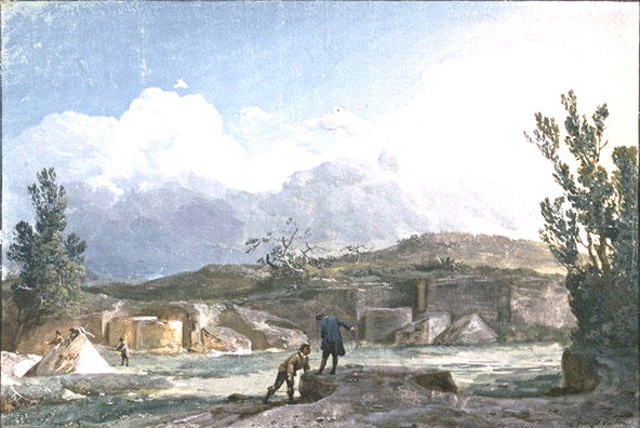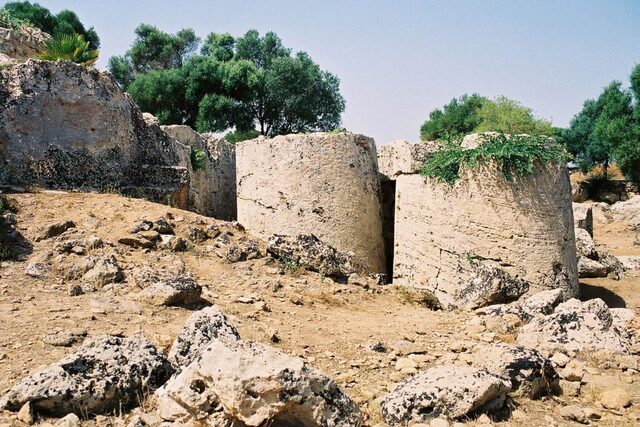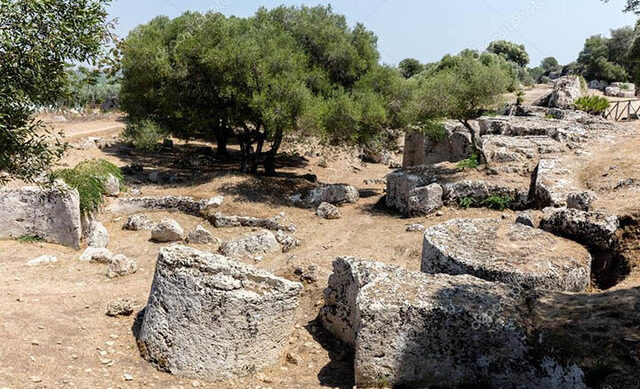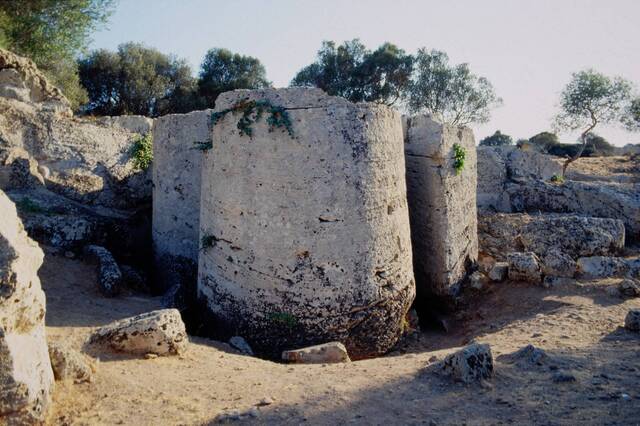Cave di Cusa, an ancient stone quarry in Sicily, holds a unique place in history as the primary source of stone for Selinunte’s grand Greek temples. Abandoned abruptly in 409 BC due to a Carthaginian invasion, this site offers a rare glimpse into the craftsmanship and ingenuity of ancient Greek engineers, preserved in time.
The History of Cave di Cusa
Quarrying activities at Cave di Cusa began in the 6th century BC during the height of Selinunte’s prosperity. The quarry was instrumental in supplying limestone blocks and enormous column drums for the construction of Selinunte’s grand temples, which showcased the architectural splendor of ancient Greece in Sicily.

However, this bustling industry abruptly ended in 409 BC when the Carthaginians sacked Selinunte. Workers likely fled the quarry in haste, leaving tools, partially carved stones, and unfinished columns scattered across the landscape. Today, the site stands as a time capsule, preserving a moment of history frozen in place.
Video:
Unfinished Legacy: The Massive Columns
One of the most striking features of Cave di Cusa is the presence of unfinished columns. These massive drums, some still attached to the bedrock, reveal the different stages of production. Visitors can observe how the stone was carefully carved out in cylindrical shapes, a labor-intensive process that required extraordinary precision.

Some columns appear nearly complete, while others remain rough-hewn, offering a snapshot of ancient quarrying methods. This unfinished work not only highlights the abrupt nature of the quarry’s abandonment but also provides valuable insight into the tools and techniques used by ancient Greek engineers.
Ancient Greek Quarrying Techniques

The quarrying process at Cave di Cusa showcases the ingenuity of ancient Greek engineers. Workers began by marking the circumference of the column drums directly on the limestone bedrock. Using iron tools such as chisels and hammers, they meticulously carved out the stone, leaving cylindrical shapes that were then separated from the bedrock.
Transporting these enormous stones to Selinunte, located approximately 10 kilometers (6 miles) away, was a remarkable feat. The stones were likely dragged along specially constructed paths using wooden sledges and oxen, demonstrating the advanced logistical planning of the time. The precision with which these massive stones were extracted and shaped continues to astonish archaeologists and engineers alike, underscoring the sophistication of ancient craftsmanship.
Archaeological Significance

Cave di Cusa is more than just a quarry; it is a treasure trove of information about ancient Greek construction practices. The site reveals not only how the Greeks approached monumental architecture but also their ability to adapt to environmental and logistical challenges.
By studying the quarry, researchers have gained a deeper understanding of the relationship between quarries and temple construction in ancient Greece. The unfinished columns at Cave di Cusa stand as silent witnesses to the labor, ingenuity, and ambition that characterized Greek architectural endeavors. Comparisons to other ancient quarries, such as those in Egypt or the Aegean islands, highlight the unique methods and materials employed by the Greeks.
Cave di Cusa Today

Today, Cave di Cusa is a well-preserved archaeological site that attracts historians, archaeologists, and curious visitors. The quarry’s scattered columns and serene natural setting make it a compelling destination for those interested in ancient history and engineering. Interpretive signs and guided tours help visitors understand the site’s significance and the processes involved in ancient stone quarrying.
Efforts have been made to preserve the site and protect it from environmental degradation. Visitors are encouraged to explore the quarry respectfully, ensuring that this invaluable piece of history remains intact for future generations to study and appreciate.
Conclusion
Cave di Cusa stands as a remarkable relic of ancient Greek ingenuity, frozen in time due to a sudden historical upheaval. Its unfinished columns and abandoned tools not only preserve a moment in history but also offer a deep understanding of the labor and precision involved in Greek construction. Visiting this quarry is like stepping into a moment of ancient history, a testament to both human ambition and the unpredictability of the past.



